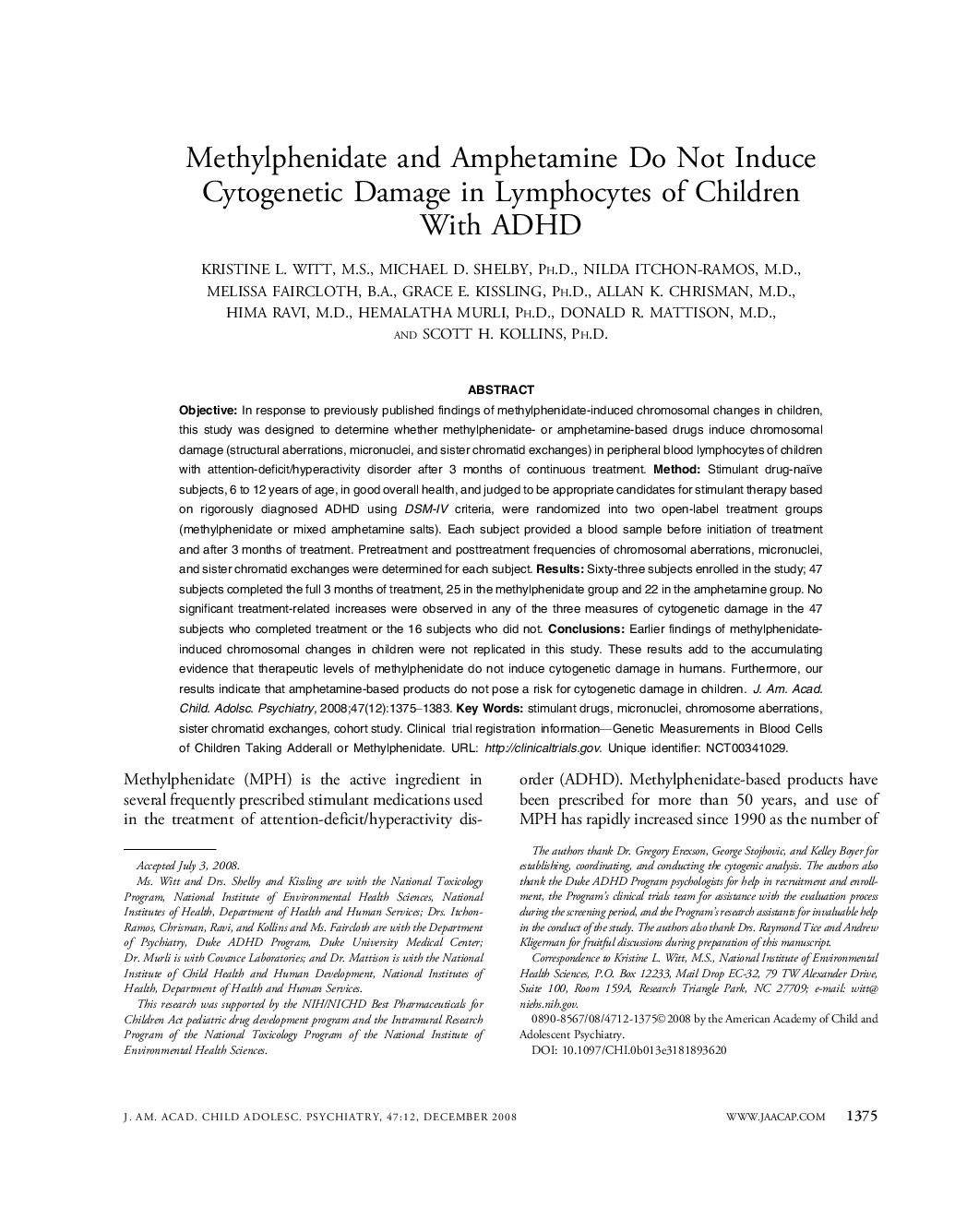| Article ID | Journal | Published Year | Pages | File Type |
|---|---|---|---|---|
| 325938 | Journal of the American Academy of Child & Adolescent Psychiatry | 2008 | 9 Pages |
ObjectiveIn response to previously published findings of methylphenidate-induced chromosomal changes in children, this study was designed to determine whether methylphenidate- or amphetamine-based drugs induce chromosomal damage (structural aberrations, micronuclei, and sister chromatid exchanges) in peripheral blood lymphocytes of children with attention-deficit/hyperactivity disorder after 3 months of continuous treatment.MethodStimulant drug-naïve subjects, 6 to 12 years of age, in good overall health, and judged to be appropriate candidates for stimulant therapy based on rigorously diagnosed ADHD using DSM-IV criteria, were randomized into two open-label treatment groups (methylphenidate or mixed amphetamine salts). Each subject provided a blood sample before initiation of treatment and after 3 months of treatment. Pretreatment and posttreatment frequencies of chromosomal aberrations, micronuclei, and sister chromatid exchanges were determined for each subject.ResultsSixty-three subjects enrolled in the study; 47 subjects completed the full 3 months of treatment, 25 in the methylphenidate group and 22 in the amphetamine group. No significant treatment-related increases were observed in any of the three measures of cytogenetic damage in the 47 subjects who completed treatment or the 16 subjects who did not.ConclusionsEarlier findings of methylphenidate-induced chromosomal changes in children were not replicated in this study. These results add to the accumulating evidence that therapeutic levels of methylphenidate do not induce cytogenetic damage in humans. Furthermore, our results indicate that amphetamine-based products do not pose a risk for cytogenetic damage in children.
